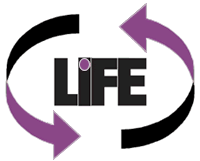

...helping to bring digital preservation to LIFE

LIFE3
The third phase of LIFE commenced in August 2009, and will run for one year with funding from JISC and RIN. By producing a predictive costing tool, LIFE3 will significantly improve the ability of organisations to plan and manage the preservation of digital content. The project will expand its existing Generic Preservation Model to create a comprehensive suite of models covering all life cycle stages, providing greater accuracy and assurance in estimation. The predictive costing tool will be made available towards the end of 2010, as both a web application and an Excel-based model. The project team would be delighted to hear from organisations interested in assisting with trials of the tool.
WP1: Development of the Predictive Models. The objective of the WP is to further refine the GPM (Generic Preservation Model) and develop new estimative models for the other stages of the lifecycle. The GPM was first developed in LIFE1 in order to estimate the cost for the preservation stage of a digital object's lifecycle. The GPM is truly innovative, because very little costing information for this activity exists. Few details are available of either the breakdown of what the process might involve or of the costs of each of these elements for the large scale preservation of digital collections.
Because of lack of historical figures, a strategy of estimation has been employed in LIFE. A mathematical model was developed to estimate costs for key areas of preservation activity. The model represents a series of costs over time, consisting of an annual technology watch and monitoring of content, along with spikes of preservation activity. Trends in areas such as tool development and the life expectancy of file formats have been estimated and modelled. Inputs to the model for base costs like staffing have been identified and defined. A process of review has been performed to refine the model, and data from Case Studies has been employed to generate estimated preservation costs.
WP2: Demonstrator Toolset development. Building on the work of the LIFE2 outputs LIFE3 will undertake the development of a user friendly demonstrator toolset which end-users will be able to use to predict digital curation and preservation costs. The user could be a library, gallery or archive, a funder, a digital curation service or a researcher preparing a bid for a funding agency.
Developing our ability to cost the digital preservation lifecycle will require further investment in costing tools and models, and this will be the main focus of WP2. Developments in estimative models will be needed to support planning activities, both at a collection management level and at a later preservation planning level once a collection has been acquired. In order to support these developments, a greater volume of raw cost data will be required to inform and test new cost models. This volume of data cannot be supported via the Case Study approach, and the LIFE team will produce a user friendly inclusive software tool to encourage the creation of the volume of costing data necessary to provide a predictive model for the research and preservation community.
WP3: Assessment by the digital preservation community of the outputs of WP1 and WP2 and incorporation of results into LIFE3 predictive tool. It will be important to capture the input of the digital preservation community as the costing toolset is being built. The project intends to undertake this formative evaluation of the toolkit through detailed evaluation and comment from the LIFE Team in London and the Danish LIFE implementers in the Danish National Library and Archive and through selected interviews with highly experienced digital preservation champions. This formative feedback and comment will be fed into the development of the toolkit before the demonstrator version is released for general use.
WP4: Evaluation of LIFE3 project by external evaluator. Quality assurance for the outputs of the project will be obtained via the mechanism of an external review of LIFE3. The evaluation will take the Aims and Objectives expressed in the project documentation and the Outputs which will result from LIFE3 and assess them for robustness, fitness for purpose, likely level of acceptance by the user and stakeholder communities and sustainability. The output of WP4 will be a Report, which will be available to the LIFE Team before the end of the project. This will inform work towards the end of the project and also act as a baseline for further work on refinement and development of the toolset in any future funded work.
WP5: Dissemination and End of Project Conference Sessions to launch demonstrator toolset. The LIFE Team has already undertaken wide dissemination on the outputs of the first two phases of LIFE.
for enquiries contact life@bl.uk
LIFE (Life Cycle Information for E-Literature) is a funded by the Joint Information Systems Committee (JISC) and Research Information Network (RIN) and is a collaboration between University College London (UCL) and the British Library





